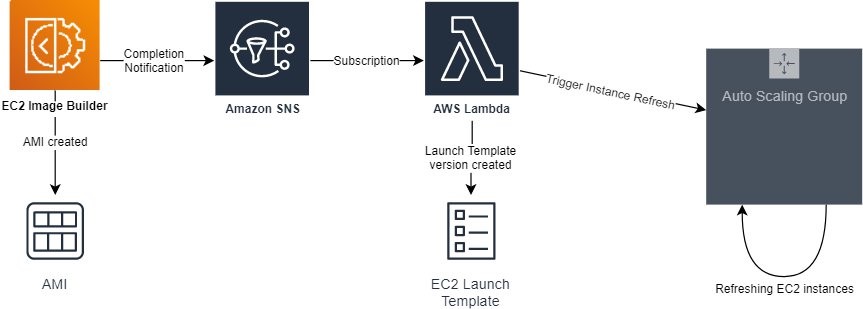AWS Compute Blog
Tag: Amazon EC2
How to monitor Windows and Linux servers and get internal performance metrics
This post was written by Dean Suzuki, Solution Architect Manager. Customers who run Windows or Linux instances on AWS frequently ask, “How do I know if my disks are almost full?” or “How do I know if my application is using all the available memory and is paging to disk?” This blog helps answer these […]
Integrating AWS Outposts with existing security zones
This post is contributed by Santiago Freitas, AWS Head of Technology EEM and Matt Lehwess, Principal Developer Advocate. AWS Outposts is a fully managed service that extends AWS infrastructure, services, APIs, and tools to your on-premises facility. This blog post explains how the resources created on an Outpost can be integrated with security zones of […]
Proactively manage the Spot Instance lifecycle using the new Capacity Rebalancing feature for EC2 Auto Scaling
By Deepthi Chelupati and Chad Schmutzer AWS now offers Capacity Rebalancing for Amazon EC2 Auto Scaling, a new feature for proactively managing the Amazon EC2 Spot Instance lifecycle in an Auto Scaling group. Capacity Rebalancing complements the capacity optimized allocation strategy (designed to help find the most optimal spare capacity) and the mixed instances policy […]
How to enable X11 forwarding from Red Hat Enterprise Linux (RHEL), Amazon Linux, SUSE Linux, Ubuntu server to support GUI-based installations from Amazon EC2
This post was written by Sivasamy Subramaniam, AWS Database Consultant. In this post, I discuss enabling X11 forwarding from Red Hat Enterprise Linux (RHEL), Amazon Linux, SUSE Linux, Ubuntu servers running on Amazon EC2. This is helpful for system and database administrators, and application teams that want to perform software installations on Amazon EC2 using […]
Introducing queued purchases for Savings Plans
This blog post is contributed by Idan Maizlits, Sr. Product Manager, Savings Plans AWS now provides the ability for you to queue purchases of Savings Plans by specifying a time, up to 3 years in the future, to carry out those purchases. This blog reviews how you can queue purchases of Savings Plans. In November […]
Creating an EC2 instance in the AWS Wavelength Zone
Creating an EC2 instance in the AWS Wavelength Zone This blog post is contributed by Saravanan Shanmugam, Lead Solution Architect, AWS Wavelength AWS announced Wavelength at re:Invent 2019 in partnership with Verizon in US, SK Telecom in South Korea, KDDI in Japan, and Vodafone in UK and Europe. Following the re:Invent 2019 announcement, on August […]
EFA-enabled C5n instances to scale Simcenter STAR-CCM+
This post was contributed by Dnyanesh Digraskar, Senior Partner SA, High Performance Computing; Linda Hedges, Principal SA, High Performance Computing In this blog, we define and demonstrate the scalability metrics for a typical real-world application using Computational Fluid Dynamics (CFD) software from Siemens, Simcenter STAR-CCM+, running on a High Performance Computing (HPC) cluster on Amazon […]
Must-know best practices for Amazon EBS encryption
This blog post covers common encryption workflows on Amazon EBS. Examples of these workflows are: setting up permissions policies, creating encrypted EBS volumes, running Amazon EC2 instances, taking snapshots, and sharing your encrypted data using customer-managed CMK. Introduction Amazon Elastic Block Store (Amazon EBS) service provides high-performance block-level storage volumes for Amazon EC2 instances. Customers […]
Executing Ansible playbooks in your Amazon EC2 Image Builder pipeline
This post is contributed by Andrew Pearce – Sr. Systems Dev Engineer, AWS Since launching Amazon EC2 Image Builder, many customers say they want to re-use existing investments in configuration management technologies (such as Ansible, Chef, or Puppet) with Image Builder pipelines. In this blog, I walk through creating a document that can execute an Ansible […]
Introducing Instance Refresh for EC2 Auto Scaling
This post is contributed to by: Ran Sheinberg – Principal EC2 Spot SA, and Isaac Vallhonrat – Sr. EC2 Spot Specialist SA Today, we are launching Instance Refresh. This is a new feature in EC2 Auto Scaling that enables automatic deployments of instances in Auto Scaling Groups (ASGs), in order to release new application versions or make […]









